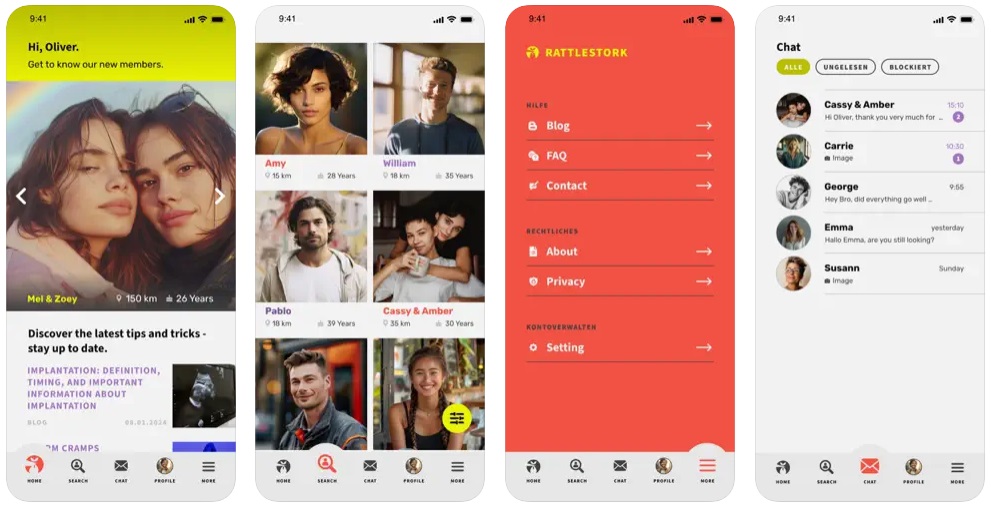Decision first
Before appointments and medicines, decide roles: who donates, who carries—and why. Key inputs are egg age and findings, day-to-day practicality, and your shared preference. A simple decision matrix helps:
| Criterion | Questions to assess | Practical tip |
|---|---|---|
| Egg factors | Age, AMH/AFC, endometriosis, previous surgery | Align roles with egg age |
| Uterine factors | Lining, fibroids/polyps, inflammation | Address issues before starting |
| Work & life | Work hours, shifts, care support | Share calendars and plan cover |
| Preference & roles | Who prefers to donate, who to carry—now & later? | Discuss expectations openly |
How reciprocal IVF works
Partner A’s eggs are stimulated and collected, fertilised in the lab with donor sperm, and the embryo is transferred to Partner B’s uterus. A contributes the genetics, B the pregnancy. For a future sibling, you can intentionally swap roles. The clinical pathway mirrors IVF; the main differences are role allocation, documentation and legal steps.

Success rates and factors
The strongest lever is the egg age of the donating partner. Other drivers include lab quality, embryo development, endometrial preparation, transfer timing, a single-embryo strategy, and co-existing conditions. Professional bodies often recommend single-embryo transfer to reduce multiple pregnancy risk. For India, follow clinic quality and registration on the National ART & Surrogacy Registry and use evidence-based protocols (Acts/Rules via DHR).
| Factor | Impact | What to do |
|---|---|---|
| Egg age | high | Use age & AMH/AFC to inform role choice |
| Embryo quality | moderate–high | Choose an experienced, registered clinic; avoid unproven add-ons |
| Endometrium | moderate | Treat inflammation/fibroids; hit the transfer window |
| Transfer strategy | moderate | Usually single-embryo transfer; weigh risks carefully |
| Lifestyle | moderate | Don’t smoke; prioritise sleep, nutrition and stress care |
For regulatory context, see the ART Act 2021 and Rules 2022 (Act; Rules). Independent policy notes by PRS give an overview of scope and gaps (PRS).
Step-by-step
Pre-assessment for both: Medical history, ultrasound, hormones, ovarian reserve (AMH/AFC), infection screening, vaccination review; genetic counselling if needed. Set roles, timeline and budget; select a registered clinic (check via the National Registry).
Ovarian stimulation and egg collection (Partner A): Stimulation with monitoring, trigger, transvaginal collection. Aim: good yield with a low OHSS risk.
Fertilisation and embryo culture: IVF/ICSI depending on findings, culture over several days, quality grading. Use add-ons only where benefit is evidenced.
Preparing for transfer (Partner B): Lining preparation in a natural or substituted cycle; define the transfer window; usually single-embryo transfer.
Transfer and follow-up: Embryo transfer, luteal support, pregnancy test, early scan; adjust medicines where needed.
Safety, tests and medicines
Standard care includes up-to-date infection screening, vaccination status (e.g. rubella), medicine and thyroid checks, and folic acid pre-conception. Modern protocols reduce OHSS risk; single-embryo strategies cut multiple pregnancy risk. India’s Acts/Rules set clinic duties for safety, consent and record-keeping (see DHR Acts & Circulars).
Time, costs and organisation
Expect a wait for the first appointment and diagnostics. The active phase typically spans two to six weeks—from stimulation through collection and culture to transfer. Costs vary by city and protocol; plan headroom for medicines, possible frozen transfers and storage. Keep documents centralised and confirm your clinic’s registration number on the National ART & Surrogacy Registry.
| Building block | What to consider | Practical tip |
|---|---|---|
| Appointments | Monitoring, procedure day, transfer window, time off work | Shared calendar; arrange cover early |
| Budget | Stimulation, collection, lab, transfer, medicines; possible freezing & storage | Request itemised quotes; add contingency |
| Documents | Consents, donor papers, invoices, protocols | Scan and store centrally for the long term |
| Logistics | Travel, childcare, day-to-day support | Use checklists; define responsibilities |
Choosing a donor
You may use a clinic/sperm-bank donor or a known donor. Prioritise current testing, transparent profiles, clarity on future contact, and robust documentation. If you plan siblings, discuss same-donor availability and family limits early. In India, donors and banks are regulated under the ART Act/Rules; ensure your provider is registered on the National ART & Surrogacy Portal.
Legal basics (India)
Framework: Assisted Reproductive Technology (Regulation) Act, 2021 and Rules, 2022; Surrogacy (Regulation) Act, 2021 and Rules, 2022 (ART Act; ART Rules; Surrogacy Act).
Access and recognition: Under current interpretation, ART services are primarily structured around married heterosexual couples and (in some contexts) single women; LGBTQ+ couples and live-in partners face significant legal and practical barriers to treatment as a couple and to joint parentage recognition. Government filings and commentary have confirmed ineligibility for surrogacy for same-sex couples; clinic policies on IVF access to same-sex couples vary and often defer to the Acts/Rules and local authorities (policy note; overview).
Registry & compliance: Clinics/banks must be registered and report to the National ART & Surrogacy Registry (Portal; Gov info). Consent forms, storage periods and documentation are codified in the Acts/Rules; use only registered providers and keep copies of all signed documents (DHR).
Practical implication for reciprocal IVF: While IVF with donor sperm is a medical possibility, as a couple same-sex female partners may not be accepted for ART services or joint legal parentage under the current framework. Individuals may seek care as single women, but non-birth-partner parentage recognition is not currently provided by default in India. Seek specialised legal advice before planning, and note that some couples pursue care/parentage arrangements in other jurisdictions.
Myths and facts
- More embryos mean higher chances? Single-embryo transfer reduces risk and is often the safer strategy.
- The fitter partner should carry? Egg age, medical history, daily life and preference matter more.
- Add-ons always help? Only use those with proven benefit.
- Law is the same everywhere? National rules differ; in India, Acts/Rules and registry compliance govern access.
- Fresh beats frozen? Frozen transfers can perform just as well.
- Lifestyle cancels out age? Healthy habits help but don’t replace biology.
- A known donor makes everything simpler? Testing, documentation and clear agreements remain essential.
- One negative transfer means the plan was wrong? Several attempts are common; protocols can be adjusted.
When to see a doctor
- Before starting: baseline assessments plus role and timeline planning.
- If you have existing conditions, take regular medicines or have cycle irregularities.
- If pregnancy doesn’t occur after transfers or protocols need changing.
India context: verify your clinic’s registration and consent/document formats per the Acts/Rules; policy overviews via PRS.
Find donors with RattleStork
RattleStork helps you search for donors with verified profiles, secure messaging and tools for scheduling, notes, cycle and timing planning, plus private checklists. Focus: transparency, safety and sound documentation. RattleStork is not a substitute for medical advice.

Conclusion
Reciprocal IVF combines shared involvement with the structure of clinical care. What matters most: egg age, a well-prepared endometrium, realistic time and budget plans, evidence-based choices and the right paperwork. In India, confirm provider registration and understand the legal constraints for same-sex couples before committing to a plan.

